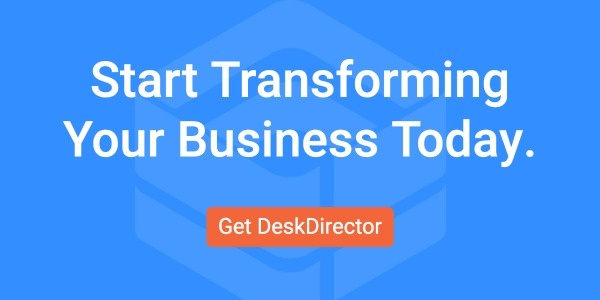84% of consumers are willing to spend more to get better customer service.
One way to greatly boost customer satisfaction and also manage employee requests is by introducing a ticketing system to your organization.
A ticketing system is a software tool that helps organizations manage customer service and internal employee requests. These systems enable customer service providers, HR departments, IT techs, and other teams to create, route, manage, track, and resolve tickets quickly and efficiently through automation.
But if you’ve done a bit of research on ticketing systems, you’ll find that there are both paid and free IT help desk software. Going with the free option might seem like a no-brainer, but it won’t always be the best option for your company. That’s why we’re showcasing the benefits and limitations of both paid and free web-based ticketing systems.
Read the blog to learn the facts that will help you decide what type of ticketing system might be right for you.
The Benefits of a Free Ticketing System
A free ticketing system is one that, as its name suggests, is free! Although there can be hidden costs that arise if you want to add features or updates, using the basic functionalities of a free ticketing system should cost you nothing.
Free ticketing systems are great if you have a small budget or have a relatively small influx of tickets and don’t need sophisticated automation features to handle a vast number of submissions.
If your ticket submission numbers are manageable but you still want to streamline and centralize ticket requests, both from customers and employees, you should consider free help desk ticketing software. With this software, you can have all your tickets in one place, easily view ticket statuses and perform simple automation, such as priority escalation (though the exact automation offerings will vary from software to software).
With a smaller array of features also comes a slimmer learning curve. Because free ticketing systems are fairly standard, they are easily accessible to most employees and customers and are simple to master.
The Limitations of a Free Ticketing System
A free ticketing system has fewer features than its paid counterpart—and this could mean missing out on some useful tools like searchable knowledge bases, custom dynamic forms, automatic ticket digest notifications, automated approval chains, and more.
For most free IT help desk software, customer support is also minimal compared to paid systems. In other words, if you or your customer encounters an issue in the ticketing process, a free system might not provide the quick communication (such as live chat) or useful resources that lead to a quick resolution.
The lack of robust support means that the maintenance required to keep the ticketing system operating smoothly, consistently updated, and abiding by best practices falls heavily on the internal team. Without many resources to access, teams can lose hundreds of hours each year working on system maintenance.
The Benefits of a Paid Ticketing System
Paid ticketing systems offer more flexibility and support than the free options. While pricing can vary, it’s certain that your paid ticketing system will have expansive, flexible functionalities.
For example, the reporting tools in paid systems are usually comprehensive and allow you to track ticket metrics at a granular level. If you want to know the average ticket resolution time, how many tickets are still in the queue, what types of tickets are most often submitted, where tickets may be getting stuck, that and more information can be found on the sophisticated dashboards of paid software.
If you have an influx of tickets, a paid ticketing system is the best way to automatically prioritize, organize, and route them, freeing up tech time and boosting the satisfaction of customers who can easily monitor their ticket status.
In addition to these benefits, paid ticketing systems are often scalable if your business expands over time; this means that you'll be able to grow with them without having to worry about whether or not your current solution will be able to meet the demands of your growing business.
The Limitations of a Paid Ticketing System
Of course, the main downside of a paid ticketing system is the cost. Pricing varies from system to system, but a paid ticketing system is certainly a long-term investment in the efficiency of your team and the margins of your company.
Also, because these systems come with so many tools, resources, and functionalities, there can be a steep learning curve and a longer implementation period. Most systems come with a knowledge base or something similar, which makes training easier, but truly mastering this system can take time.
Conclusion
Which ticketing system is right for you? The answer to that question comes down to your budget, how many tickets your organization plans on handling per day, what functionalities you’re looking for, and other factors.
Always do some research before making a decision so that you can determine what would work best for your business needs!
Looking to implement a ticketing system that has robust functionality and support and is within your budget? Sign up to try DeskDirector!









